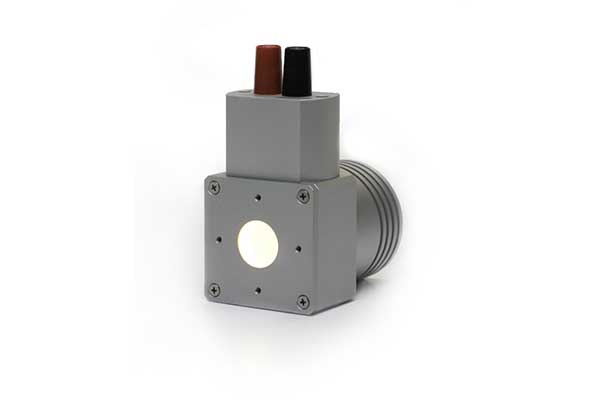
Compact Integrating Sphere Calibration Lamp for the Spectral Radiance (NMI used Calibration Standard)
The need for compact calibration standards for spectral radiance results from the available space in or on the measuring instrument to be calibrated, or from the desire to be able to use the standard as a transfer standard, or for mobile service purposes. Depending on the application, further requirements may arise in addition to the compact design of the integrating sphere.
One example is the calibration of the spectral radiance responsivity of fluorescence spectrophotometers. This calibration is also used to qualify fluorescence spectrophotometers with respect to their spectral sensitivity.
NMI Charaterzied Calibration Standard
The development and characterization of the transfer standard for spectral radiance required for this purpose was carried out by Gigahertz Optik GmbH and the Physikalisch-Technische Bundesanstalt (PTB), the german NMI comparable to NIST, etc.
Development in a Joint Project
If the results of luminescence measurements from fluorescence spectrophotometers of different designs and from different manufacturers are to be comparable, then the instrument-specific properties must be compensated. With this in mind, a joint project towards quantitative fluorometry was already started in 2013. Participants were the Federal Office for Materials Testing (BAM, Berlin), the Physikalisch-Technische Bundesanstalt (PTB, Berlin), Fluka GmbH (Switzerland) and Gigahertz Optik GmbH (Germany). The task of Gigahertz Optik GmbH was to design, build and qualify a compact integrating sphere radiator for use as a transfer standard for spectral radiance.
Transfer Standard Needs for Radiance
To meet the requirements of a transfer standard, the integrating sphere with a diameter of only 5 cm was made of the neutral and diffuse reflecting plastic ODM98 from Gigahertz Optik GmbH. This offers greater robustness compared to a barium sulfate coating. The in-line baffle between the 5 W quartz halogen lamp and the light field was also used to adjust the radiance intensity. This should be as low as possible to be within the often low linearity range of photomultiplier detectors. The transfer standard was calibrated for spectral radiance in the wavelength range from 380 nm to 1700 nm.
Based on this knowledge we are able to offer further integrating sphere sizes and port diameter configurations of radiance standards.